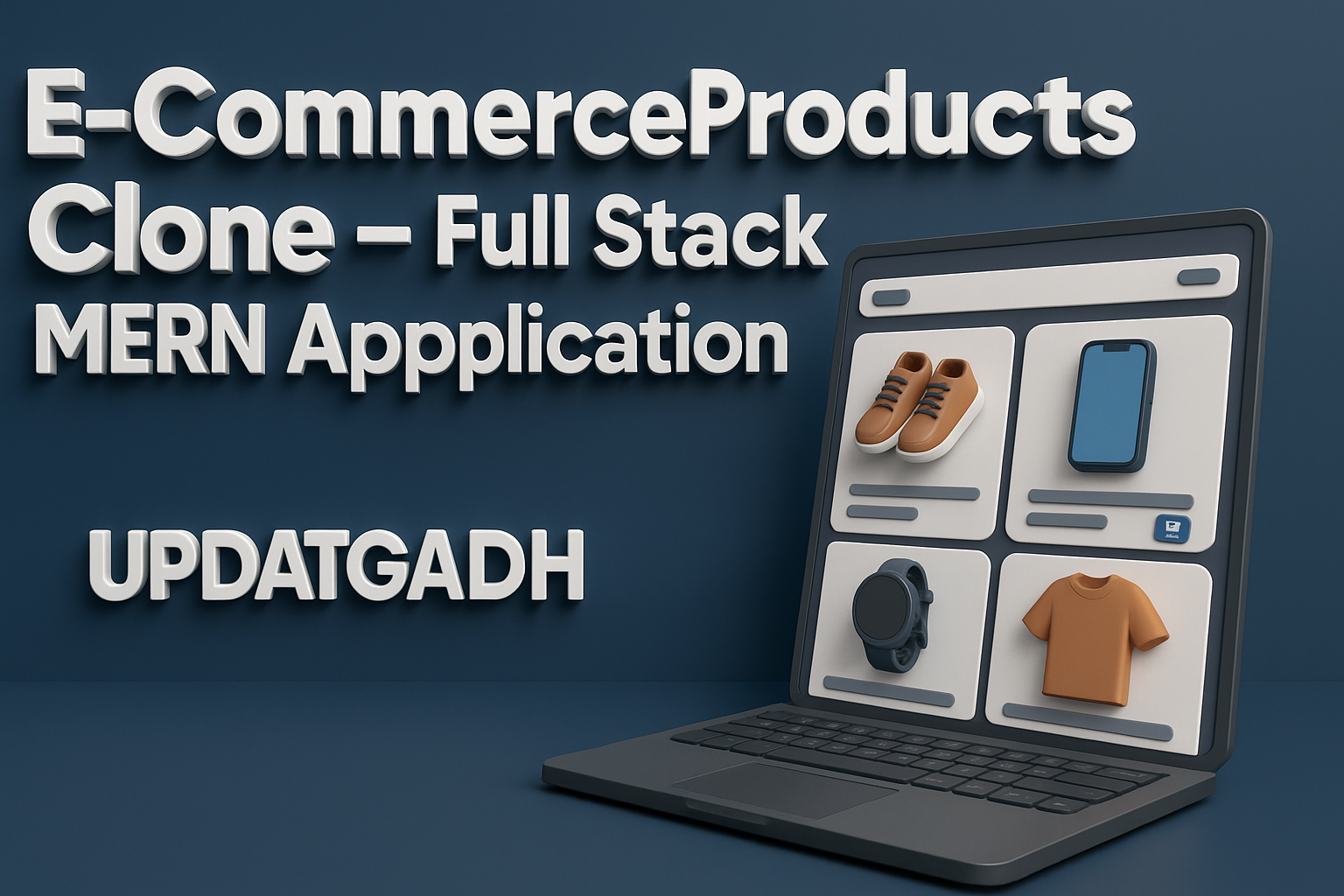
Best Vehicle Tracking Dashboard using React.js, Node.js & MongoDB
Vehicle Tracking Dashboard
A simple project on Vehicle Tracking Dashboard designed to monitor real-time vehicle movement and speed through a dynamic web interface. This project was developed using React.js, Node.js, and MongoDB, providing a complete end-to-end solution for tracking vehicles efficiently and securely.
The system offers a user-friendly dashboard that visualizes the position, speed, and distance of vehicles on a live map. It also includes features like filtering, conditional display, and graphical analytics to make tracking more insightful.
Best Final Year Project For Data Science :–Click Here
This project is a great demonstration of how front-end and back-end technologies work together to deliver real-time applications — making it a valuable learning resource for students interested in full-stack development.
Overview
| Project Name | Vehicle Tracking Dashboard |
|---|---|
| Language/s Used | React.js, Node.js, JavaScript, SASS |
| Database | MongoDB |
| Type | Web Application |
Project Description
The Vehicle Tracking Dashboard aims to display real-time information about vehicles, such as their location, speed, and distance traveled. The front-end uses React.js to render a responsive and visually appealing dashboard, while the back-end relies on Node.js and MongoDB for data storage and communication.
It uses an interactive map that dynamically shows vehicle markers and updates them as vehicle data changes in the database. The dashboard also includes charts and filters that make it easy to analyze and understand vehicle performance metrics.
Best Advanced Python Projects:-Click Here
For students, this project provides an excellent hands-on experience in building a real-time web application, integrating APIs, and working with live data visualization tools.
Available Features
This project comes with the following fully functional features:
1. Frontend Features
- Responsive Interface: Developed with React.js and SASS for an adaptive layout that adjusts to any screen size.
- Dynamic Map Integration: Shows live markers representing vehicles, displaying details such as speed, location, and ID.
- Filtering Options: Includes conditional filters that allow users to view vehicles based on parameters like speed range or activity status.
- Graph Visualization: Displays analytical data such as total distance covered and average speed through charts or graphs.
- Clean Code and Documentation: The front-end code is organized and well-documented for easy understanding and future updates.
2. Backend Features
- Node.js Server: Handles API requests and serves data between the front-end and MongoDB database.
- MongoDB Integration: Stores all vehicle-related data securely, such as location coordinates, timestamps, and speed.
- Filter Logic: Implements backend-level conditions that ensure accurate and efficient filtering of data.
- Real-Time Updates: Supports seamless communication between client and server for real-time dashboard updates.
Download New Real Time Projects :–Click here
Project Structure
After extracting the project, you’ll find the following major directories:
vehicle-tracking-main/
│
├── api/ # Backend (Node.js + MongoDB)
│ ├── index.js # Main server file
│ ├── controllers/ # Handles vehicle data logic
│ ├── models/ # MongoDB schema definitions
│ ├── package.json # Dependencies and scripts
│
├── frontend/ (React files) # React UI for dashboard
│ ├── src/ # Components, pages, and styles
│ ├── package.json # Frontend dependenciesThis modular structure keeps the project organized and makes it easier to understand for beginners in full-stack development.
Installation Guide (VS Code Setup)
Follow these step-by-step instructions to set up and run the Vehicle Tracking Dashboard locally on your system.
Step 1: Extract the Project
Unzip the project folder to a desired location on your computer.
Step 2: Open the Folder in VS Code
Open Visual Studio Code and navigate to the extracted folder.
cd Vehicle Tracking Dashboard
Step 3: Install Dependencies for Backend
Navigate to the backend directory and install dependencies.
cd api
npm install
Step 4: Set Up the Environment File
Inside the api folder, create a .env file and define your MongoDB connection URL like this:
MONGO_URI=mongodb://localhost:27017/Vehicle Tracking Dashboard
PORT=5000
Step 5: Run the Backend Server
Start the Node.js server.
npm start
or
node index.js
Step 6: Install Frontend Dependencies
Open a new terminal and navigate to the frontend directory.
cd ../frontend
npm install
Step 7: Run the React Frontend
Launch the frontend application using:
npm start
Step 8: View in Browser
Once both frontend and backend are running, open your browser and visit:
http://localhost:3000
You’ll see the Vehicle Tracking Dashboard with live vehicle updates.
Best Final Year Project For JAVA :- Click Here
Usage
The Vehicle Tracking Dashboard is designed for users who need to monitor multiple vehicles in real-time. It can be used by transport companies, delivery services, or students learning how to implement map-based applications.
Here’s how different roles interact with the system:
1. Admin
- Adds and manages vehicle records in the system.
- Controls filters and analytics to view specific vehicles or performance data.
- Can monitor all active and inactive vehicles on the live map.
2. General User
- Views real-time updates of vehicles on the dashboard.
- Uses the filter and chart features to analyze performance metrics.
- Checks distance and speed trends over time through visual graphs.
3. Developer (Student Perspective)
- Students can explore how to integrate APIs, maps, and databases in a full-stack environment.
- Helps in understanding backend data handling, frontend state management, and real-time UI rendering.
- Useful as a portfolio project or college submission to showcase full-stack and real-time development skills.
Best Final Year Project For SPRINGBOOT:–Click Here
Challenges Faced
While developing the project, a few challenges were encountered and successfully solved:
- Custom Map Markers: Implementing map icons that visually differentiate each vehicle type required additional configuration and styling.
- Real-Time Filtering Logic: Writing conditions on both frontend and backend to ensure accurate filter results without lag.
- Data Synchronization: Ensuring that map markers, graphs, and analytics all updated simultaneously without delays.
- Responsive Design: Balancing map size, chart visibility, and control panels for various screen sizes was an essential design task.
These challenges helped strengthen the understanding of React.js reactivity, API design, and database efficiency.
Why This Project Is Useful for Students
This project is highly beneficial for students because it blends frontend, backend, and database technologies into a single, practical application. By working on this project, students learn:
Best Final Year Project For JSP :- Click Here
- How to build real-time dashboards using modern tools.
- The importance of API communication between client and server.
- How to integrate maps and live data using React components.
- How to design and handle filter logic on both ends of a web app.
Moreover, it simulates a real-world application scenario, similar to what logistics and transportation companies use to track vehicles — making it a professional-level project experience.
We have Best projects Available in all languages:–Click Here
vehicle tracking dashboard templates
real-time vehicle tracking system project
vehicle tracking system project source code
vehicle tracking system project report pdf
vehicle tracking templates free download
vehicle tracking system ui design
real time vehicle tracking system project ppt
vehicle tracking website template
vehicle tracking dashboard project github
vehicle tracking dashboard project report
vehicle tracking dashboard project pdf










Post Comment